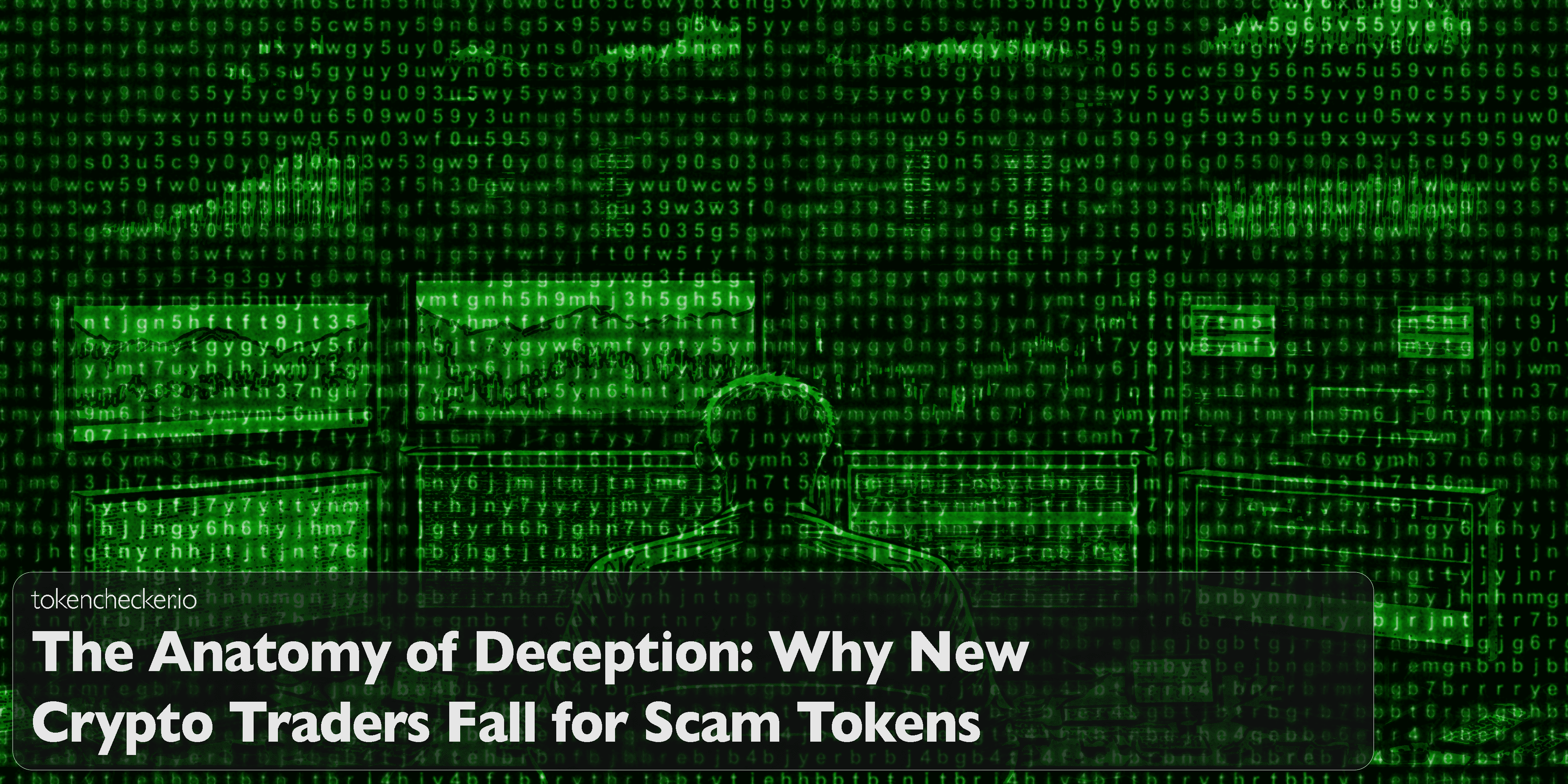
Why New Crypto Traders Fall for Scam Tokens (And How to Outsmart the Trap)
Everyone enters crypto with the same dream: early profits, financial freedom, maybe even a life-changing win. But beneath the hype and innovation, a darker reality waits. Scam tokens are everywhere. And new traders are their favorite targets.
This isn’t just about being “too trusting.” It’s about how the crypto market is structured: fast-moving, emotionally charged, and built for self-custody. Scammers love it. It gives them the perfect playground. Understanding these behavioral traps is your first line of defense.
This article breaks down why new traders fall for scam tokens, what psychological traps are most exploited, and how tokenchecker.io helps level the playing field.
The Emotional Setup: Why Scammers Target New Traders
FOMO
Fear of missing out is everywhere in crypto. You see a new token trending. It’s up 80%. People are tweeting rocket emojis. And without thinking, you buy in—just to find out later it was a rugpull.
Scammers engineer this. They hype fake tokens, post “screenshots” of gains, and pay influencers to create a sense of urgency. Token launches are timed to feel exclusive: “only 15 minutes to get in!” It all pushes you to act fast, not think.
Greed and the “Big Score” Illusion
Crypto moves fast. One token did a 100x. You want that too. But that desire to score big often clouds judgment. You overlook red flags. You trust whitepapers without reading. You take advice from strangers in Discord. This is especially true for appealing concepts like "low market cap gems."
Scammers use this to bait you into their trap. They promise “guaranteed” returns. They talk about “life-changing money.” And you convince yourself this is the one.
Overconfidence
New traders often think they’re ahead of the game. They’ve watched some YouTube videos. They know what a rugpull is. They think they can tell the difference.
But scam tokens have evolved. Today’s rugpull doesn’t always happen in a day. It might start legit, then drain funds two weeks later through a proxy contract. Or let you buy but not sell. Overconfidence becomes a weakness.
The Tools Scammers Use
Fake Websites and Wallets
They clone sites like Coinbase or MetaMask. One typo in the URL, and you’re entering your seed phrase into a phishing form.
These clones are so convincing they even rank on Google. Some scammers submit fake apps to app stores. Victims lose access in seconds.
Pump-and-Dump Campaigns
They buy a worthless token, create hype on Telegram or X (formerly Twitter), and lure people in. When the price spikes, they dump everything.
New traders see the green candles and think it’s organic. But the volume is fake, the liquidity is low, and the exit door closes fast.
Honeypot and Rugpull Contracts
Some tokens block selling entirely. Others apply 99% sell taxes. They hide these rules deep in the code—hard to spot unless you know what to look for.
This is where tokenchecker.io’s Honeypot and Contract Analysis features save lives. They simulate sell functions and scan for sneaky code like blacklists, dynamic fees, and mint traps.
Social Engineering
Scammers message as “support” staff. Or pretend to be friends. Or even build a fake romance over weeks—then introduce you to a token “opportunity.” They use urgency, trust, and flattery to bypass your defenses.
The Market Makes It Worse
Crypto is perfect for scams:
- Irreversible: Once you send funds, there’s no undo button.
- Anonymous: Scammers hide behind throwaway wallets and VPNs.
- Fast-paced: Tokens can launch, pump, and vanish in hours.
- Decentralized: No central authority = no support, no regulation, no refunds.
You’re not just up against scammers. You’re up against a system that gives them cover.
Where Most New Traders Go Wrong
- They don’t check the contract. They buy based on Telegram hype or influencer tweets, not actual code.
- They don’t check the holders. One wallet has 45% of the supply? That’s instant exit risk.
- They ignore liquidity. If LP isn’t locked, the dev can yank it anytime.
- They fall for fake “partnerships” and audits. Scam tokens often link to real audit firms—but the reports are fake.
- They rush in. The biggest mistake is moving fast. Scams are always urgent. Real tokens aren't.
How tokenchecker.io Can Help
tokenchecker.io was built to stop this cycle. It checks:
- Whether the token is a honeypot
- If the contract has dangerous functions
- If the dev wallet is selling early
- Whether liquidity is locked or burn-claimed
- If the token name is copied from another project
- If top holders are bots or sniper wallets
- If airdrops and transfers show manipulation
In short—it sees what most humans miss.
Final Thoughts
Scam tokens don’t just prey on ignorance. They prey on human nature. The desire to get rich. The excitement of being early. The fear of missing the next big thing.
But if you slow down, ask better questions, and use the right tools—you win.
Use tokenchecker.io before you buy. A 10-second scan can save you thousands.